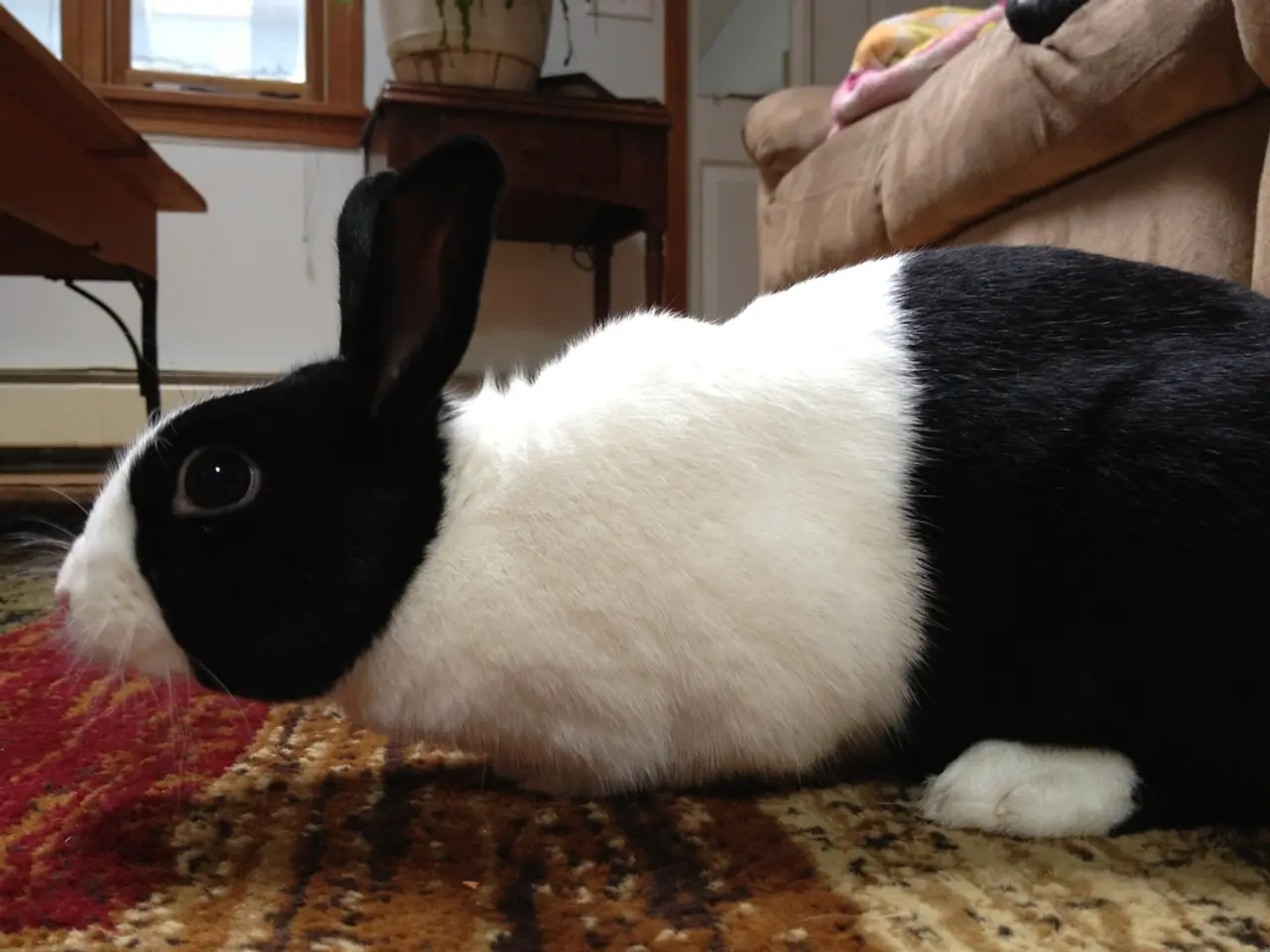Secrets to rabbit-proofing a space for your indoor pet bunny's safety
Creating a safe and stimulating environment for your indoor rabbit is essential for both their well-being and your home's protection. Here's a step-by-step guide on how to bunny-proof each room in your house.
Key Steps for Bunny-Proofing
- Cover or secure electrical cords and cables to prevent chewing and potential electrocution. Use cord protectors or hide cables behind heavy furniture.
- Block off small or tight spaces under furniture or appliances where rabbits could get stuck or chew hazards, using barriers like exercise pens, plastic sheets, or purpose-built rabbit gates.
- Remove or elevate houseplants and toxic objects out of reach. Some common plants are toxic to rabbits.
- Protect flooring and furniture to prevent damage from digging or chewing by placing tarps or protective mats in play areas.
- Use baby gates or exercise pens to confine rabbits in safe rooms or areas while allowing supervised exercise.
- Provide plenty of safe chew toys and hiding spots, such as multi-level cages or tunnels, to satisfy your rabbit’s natural behaviors and reduce destructive tendencies.
- Close off rooms or cupboards that contain dangerous items, and ensure windows or vents are secure to prevent escapes.
Every indoor space should be evaluated individually based on potential hazards like electrical outlets, fragile items, household chemicals, or other pets. Creating a bunny-safe room with controlled access and supervision is often recommended[1][2][4].
Room-Specific Considerations
- Living rooms may need furniture barriers and cable management.
- Bedrooms can be partially blocked off under beds or around furniture to prevent access to wires.
- Kitchens and bathrooms should be off-limits or secured due to toxic substances and slippery floors.
- Hallways may require gates to limit roaming.
Using modular pens and protective barriers lets you customize safe zones and gradually introduce your bunny to new rooms as they become bunny-proofed[2][4][5].
Additional Tips
- To protect baseboards, use a protector such as wooden planks, cardboard, a fence, cat scratch mats, or plastic corner protectors.
- If a carpeted room is necessary, cover it with a plastic mat or tarp, especially around the corners and the doorway.
- Furniture is a tempting target for rabbits. To avoid damage, block off the underneath of furniture using storage cube fencing.
- Providing rabbits with plenty of mental and physical stimulation through toys can help reduce the chances of them being destructive.
- Rabbits may injure themselves on slippery floors while running around. Consider using non-slip mats or rugs in play areas.
- Willow bridge toys can also be used to protect couch corners.
- You can choose to let your rabbit roam freely throughout your home or restrict their access to a single room.
Bunny-proofing involves making the home safe for rabbits by removing potential hazards and protecting possessions from their potentially destructive habits. By following these steps, you can create a safe indoor environment that allows your rabbit freedom to roam while protecting both your pet and your home.
[1] MacMillan, Dr. Rebecca. "Bunny Proofing Your Home." House Rabbit Society, 2021, https://rabbit.org/files/BunnyProofingYourHome.pdf [2] "Bunny-Proofing Your Home." House Rabbit Network, 2021, https://www.housebunny.org/bunnyproof.html [3] "Bunny-Proofing for Dummies." Chewy, 2021, https://www.chewy.com/petcentral/articles/bunny-proofing-for-dummies/58770 [4] "Bunny-Proofing Your Home." Rabbit Welfare Association & Fund, 2021, https://www.rwaf.org.uk/rabbit-care/housing/bunny-proofing-your-home [5] "Bunny-Proofing Your Home." House Rabbit Society of the Bay Area, 2021, https://www.hous rabbit.org/hsbabunnyproof.html
- To safeguard your indoor cat or kitten, secure dangling toys, small items, and electrical cords that could pose a risk of entanglement or potential electrocution.
- Provide safe hiding spots and toys to stimulate your cat or kitten, preventing them from scratching furniture or carpets out of boredom or stress.
- Keep food and water bowls clean and placed in areas where dogs can't reach them, maintaining your pet's health.
- Implement dog behavior training and socialization to ensure they get along well with other pets in your home-and-garden, ensuring a peaceful lifestyle for all your pets.
- Create a space-efficient and secure home for your pet turtle, snakes, or hamster, blocking off small or tight spaces in their enclosure and providing age-appropriate toys for their stimulation and health.
- Make sure your home is pet-friendly by placing protective mats or rubber edges on sharp corners of tables, dog kennels, and other furniture.




